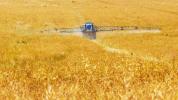Horizon Europe EWRECA Project: Improving silicate erosion in agricultural rice fields: maximizing soil carbon sequestration and crop production while reducing overall greenhouse gas emissions
- Type Project
- Status Signed
- Execution 2025 -2027
- Assigned Budget 165.312,96 €
- Scope Europeo
- Main source of financing Horizon Europe 2021-2027
- Project website Proyecto EWRECA
Rapid decarbonization and the adoption of negative emissions technologies (NETs) are imperative to limit global warming to the goals set by the Paris Agreement. Among NETs, enhanced weathering (EW) of silicate rocks shows potential for sequestering carbon dioxide from the atmosphere.
However, implementing EW, especially in agricultural systems such as rice paddies, faces challenges. These include mitigating methane emissions, addressing water demand, and managing salt stress. Supported by the Marie Skłodowska-Curie Actions (MSCA) program, the EWRECA project seeks to develop innovative agricultural management practices adapted to rice paddies, offering solutions that mitigate greenhouse gas emissions while maximizing carbon sequestration and crop productivity.
EWRECA aims to reuse crushed concrete fines, an artificial silicate from construction waste, thereby improving the circular economy of materials. To this end, a mesocosm field experiment will be established applying different agricultural management treatments. Responses on GHG emissions, plant biomass, and soil microbial communities will be assessed over two growing seasons.
To limit global warming to 2°C, well below the UN Paris Agreement, model projections indicate that both rapid decarbonization and the deployment of negative emissions technologies (NETs) that ensure stable, long-term carbon (C) sequestration will be required. Among NETs, enhanced weathering (EW) of silicate rocks can remove CO2 from the atmosphere, while potentially generating co-benefits for agriculture (e.g., lower nitrogen losses, higher yields, greater resilience to drought and salinity) and reducing overall greenhouse gas (GHG) emissions from this activity.
Therefore, the application of EW may be of particular interest in rice fields because they emit large amounts of methane (up to 11% of global CH4 emissions); have high water demands and could face drought episodes due to climate change; and are exposed to salt stress in Europe because they are grown in coastal areas. Although some studies have investigated the effects of silicate waste on rice fields, none have combined natural silicate rocks and waste simultaneously.
Furthermore, the quantification of inorganic C sequestration by EW and the potential risks in terms of heavy metal contamination have rarely been assessed. The main objective of EWRECA is to develop an agricultural management practice for rice paddies that (i) minimizes GHG emissions while maximizing (ii) rice production (biomass and quality) and (iii) C sequestration. Furthermore, EWRECA aims to reuse crushed concrete fines, an artificial silicate sourced from construction waste, thus enhancing the circular economy of materials.
To achieve this objective, a mesocosm field experiment will be conducted using different agricultural management treatments. Responses in GHG emissions, plant biomass, and soil microbial communities will be assessed over two growing seasons. Overall, this project will generate valuable scientific results that will be of interest for national, European, and global strategic actions in agricultural systems.
- CENTRO DE INVESTIGACION ECOLOGICA Y APLICACIONES FORESTALES (CREAF - CERCA)
- UNIVERSITY CORPORATION FOR ATMOSPHERIC RESEARCH NONPROFIT CORPORATION (UCAR)
- SENCKENBERG GESELLSCHAFT FUR NATURFORSCHUNG
- THE UNIVERSITY OF EXETER (UNEXE)
- TECHNISCHE UNIVERSITAET MUENCHEN (TUM)
- UNIVERSITY OF DURHAM (UNIVERSITY OF DURHAM)
- MET OFFICE
- KOBENHAVNS UNIVERSITET (UCPH)
- UNIVERSITE CATHOLIQUE DE LOUVAIN (UCLouvain)
- CONSORTIUM OF EUROPEAN TAXONOMIC FACILITIES (CETAF)
- UNIVERSITY OF LEEDS (UNIVLEEDS)
- AGENCIA ESTATAL CONSEJO SUPERIOR DE INVESTIGACIONES CIENTIFICAS (CSIC)
- ALFRED-WEGENER-INSTITUT HELMHOLTZ-ZENTRUM FUR POLAR- UND MEERESFORSCHUNG (AWI)
- POTSDAM-INSTITUT FUR KLIMAFOLGENFORSCHUNG EV (PIK)
- UNIVERSIDAD COMPLUTENSE DE MADRID (UCM)
- UNITED KINGDOM RESEARCH AND INNOVATION (UKRI)
- Geological Survey of Denmark and Greenland (GEUS)
- UNIVERSITY OF BRISTOL
- RIJKSUNIVERSITEIT GRONINGEN
- MAX-PLANCK-GESELLSCHAFT ZUR FORDERUNG DER WISSENSCHAFTEN EV (MPG)
- UNIVERSITY OF LEICESTER (ULEIC)
- CARDIFF UNIVERSITY (CARDIFF UNIVERSITY)
- Website of the Center for Ecological Research and Forestry Applications
- UNIVERSITY CORPORATION FOR ATMOSPHERIC RESEARCH NONPROFIT CORPORATION website
- SENCKENBERG GESELLSCHAFT FUR NATURFORSCHUNG website
- THE UNIVERSITY OF EXETER website
- TECHNISCHE UNIVERSITAET MUENCHEN website
- University of Durham website
- MET OFFICE website
- Website of KOBENHAVNS UNIVERSITY
- UNIVERSITE CATHOLIQUE DE LOUVAIN website
- University of Leeds website
- Website of the STATE AGENCY OF THE HIGHER COUNCIL FOR SCIENTIFIC RESEARCH
- ALFRED-WEGENER-INSTITUT HELMHOLTZ-ZENTRUM FUR POLAR- UND MEERESFORSCHUNG website
- POTSDAM-INSTITUT FUR KLIMAFOLGENFORSCHUNG EV website
- Website of the Complutense University of Madrid
- UNITED KINGDOM RESEARCH AND INNOVATION website
- Geological Survey of Denmark and Greenland website
- University of Bristol website
- RIJKSUNIVERSITEIT GRONINGEN website
- MAX-PLANCK-GESELLSCHAFT ZUR FORDERUNG DER WISSENSCHAFTEN EV website
- UNIVERSITY OF LEICESTER website
- Cardiff University website







